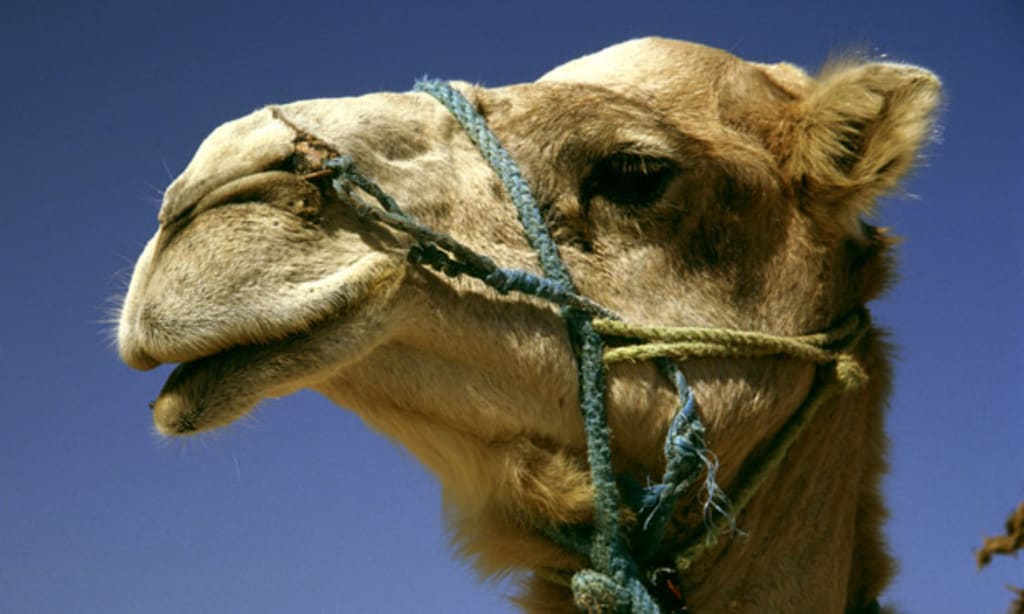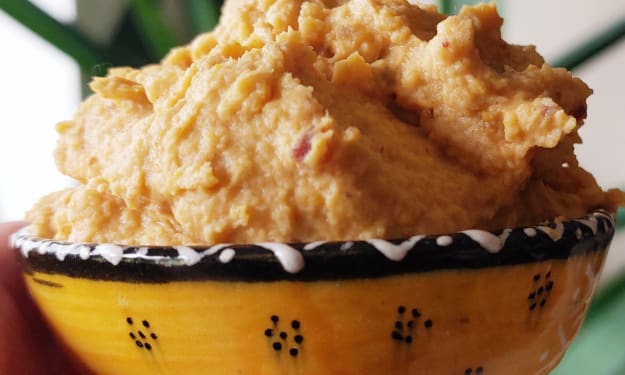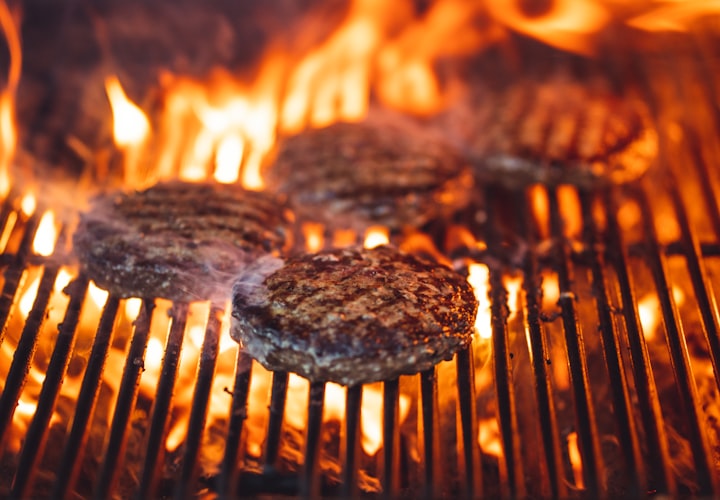No! It Doesn’t Taste Like Chicken —Camel Meat—Fit For A Sultan’s Feast
Abu el-Heidja has deflowered in one night. Once eighty virgins, and he did not eat or drink between, Because he surfeited himself with chickpeas, And had drunk camel's milk with honey mixed. Sheik Nefzawi: The Perfumed Garden

Long treasured in Middle-Eastern countries as a delicacy, camel meat is often the featured culinary highlight for galas, receptions, banquets and serious celebrations. Specialist camel butchers prepare the meat, with the hump as the most prized portion of the animal; similar to the back strap cut on an elk. Contrary to what many people believe, the camel hump is essentially a storehouse of fat; not a water bladder. Described as a cross between lamb and beef, young camel meat in no way tastes like chicken.
Camel’s Meat Gains International Popularity
CNN.com reports, "Not long ago camel milk was an unfancied staple, the preserve of Bedouin herders. However, companies in the UAE have recently been positioning camel products as the stuff of luxury.
Upscale department stores like London's Selfridge's now stock camel milk chocolate and it might not be long before camel milk ice cream, cheese, hot dogs—and even camel leather handbags—follow suit."
"Currently, we are exporting our camel milk to Kuwait, Jordan, Malaysia, Austria and the UK, with quite positive outcomes," says Mustasher Al Badry, the deputy general manager at Camelicious, one of the UAE's camel milk producers, and a brand owned by the Emirates Industry for Camel Milk & Products (EICMP).
In the last few years, Camelicious' product line has exploded. They recently launched the world's first camel milk cheese, and their herd of camels has grown from a few hundred in 2006 to 4,200 as of today. Their sister company, Al Nassma, Dubai's luxury brand of camel milk chocolate, recently developed camel milk gelato.
'We are pioneers in our field, and pretty much anything we do is a 'first-time-ever,'' says Al Badry."
I haven't personally tried camel's meat; however, a friend working in Saudi Arabia has been privileged to attend and enjoy many elaborate private family dinners and tribal celebrations denied to most Westerners.
His tales of a recent three-day extravagant event in which 16 young camels were roasted to tender and golden, crispy perfection, served on gigantic solid gold platters surrounded by a cornucopia of exotic side dishes, fresh fruit, and rice accompanied by strong coffee, piqued my appetite and interest in camel’s meat as well as the flavor, preparation, and nutritional benefits of camel's meat and milk. My friend said young camel is by far the best; sweet, succulent, and absolutely delicious. It is now his favorite red meat.
Proven Superior to Other Meats
KabayanWeekly.com reports, "Studies and medical research have proved that camel meat is superior to other kinds of meat. The camel is distinguished from other animals by the fact that the percentage of its intramuscular fat declines as the animal gets older. This quality, only found in camels, makes camel meat less fatty, so its consumption is healthy and recommended for weight loss. And this quality also reduces the risk of cardiovascular disease and atherosclerosis since it lowers the percentage of cholesterol in the blood.
This was concurred by Dr. Syd Angel Ellica, M.D., General Practitioner of KIMS Medical Center, Dubai who furthermore stated that camel meat is a good source of protein, which is utilized by the body for building new cells, prevention of infection and strengthening the immune system.
Dr. Ellica also said that camel meat might also be recommended as a diet to patients who have a protein deficiency, muscle wasting or any form of protein malnutrition but such must be done after a thorough assessment of their medical condition. These types of diet must be given together with albumin (in the form of egg whites) which is the ideal diet for protein losses; after considering factors such as the availability of the meat, the financial status of the patient (camel meat costs more than the other contemporary meats) and more importantly the taste preference of the patient who is not accustomed of eating that type of meat.
As for the nutrients that a person may benefit from eating camel meat, Dr. Ellica assures that this meat considering the high chemical composition of protein contains the three main electrolytes needed by the body, which are potassium, sodium and calcium. It also has minerals like zinc, phosphorus, magnesium, iron, copper; and vitamins B1, B2, B6, C, and Vitamin E."
Health Benefits of Camel’s Meat
"Camel meat has a strong impact on the nerves and provokes them. Hence, modern medicine tells the hot-tempered individual not to eat a great deal of camel's meat." - Author Unknown
In an issue by the Oman Daily Observer, dated September 16, 2009 it was noted, “Camel meat can also relieve exhaustion and fatigue because it contains energy needed by body cells. Such energy comprises sugar not fat, since, a camel’s fat is concentrated in its hump whereas other animals store it in their muscles. In addition, camel meat contains glycogen, a carbohydrate which is easily absorbed and metabolized in the body and is converted to glucose which activates nerve as well as other cells. Such quality makes it good for the elderly, as it will provide the needed energy and protein to compensate for tissue damage and reproduce hormones and enzymes for cell function.”
Camel meat is known for its high percentage content of iron, one of the basic building blocks of blood hemoglobin, which helps to reduce the risk of anemia. Persons who suffer from anemia are advised to eat camel meat.
Ancestors, originating from all points of the desert regions of the world used camel meat for curing seasonal fevers, influenza, backaches and muscle pain. Camel meat was also used for removing undesirable skin freckles by placing heated meat slices on the freckled area. Camel meat soup was a “go-to cure” corneal opacity and to strengthen eyesight, while its fat was used to ease hemorrhoid discomfort.
Traditionally, camel hump fat was used to remove tapeworms and the dried lung prescribed as a cure for asthma, especially if taken with honey. This was because the camel’s lung is rich in vitamin C which helps reduces fever, fights infection and enhances immunity.
Camel's milk contains only half of the fat found in cow's milk—a quality that makes it ideal for the health conscious.
The consumption of camel products was given a huge boost last year when the European Union agreed to accept camel milk imports from the UAE (meat is still pending).
Camel meat is finding its way into the American marketplace as well. DNAInfo.com reports, "CHICAGO - Camel meat, fit for a sultan's feast, is now in the freezer case at Mariano's.
The grocery chain started carrying the delicacy two months ago to beef up its wild game section. Fourteen of the company's 28 stores now stock the meat, which is sold ground for $12.99 a pound.
The demand is there, said Amanda Puck, Mariano's director of strategic brand development.
'We have a niche group of customers who are interested in wild game,' she said. 'Shoppers are asking for [camel meat] in Oak Lawn.'
Mariano's also sells ground venison, ostrich patties, whole rabbit, and pheasant and alligator steaks."
Australia Camel Meat Exports
Camels have been a part of the Australian landscape since the early 19th century, but until relatively recently, they attracted little attention. Then, in the late 1990s, aerial surveys showed a massive build up of camel numbers, with populations doubling every nine years or so.
There are now an estimated 750,000 camels roaming Australia’s arid interior, moving into more remote areas and encroaching on pastoral land. They are regarded as a significant pest across more than three million square kilometers in the arid and semi-arid parts of Western Australia, South Australia, Queensland and the Northern Territory.
Harvesting camels in the wild for export began in Alice Springs, Australia in the 1980s. According to figures from the Australia Department of Agriculture, Fisheries, and Forestry (DAFF), the camel meat industry has struggled with the high costs of working in remote environments and the need to transport live camels over a long distance to abattoirs. This limits processing infrastructure and causes irregularity and disruptions in camel supply and fragmented, inadequate and undependable marketing of camel meat.
Australia currently exports camel meat to a range of markets, including the European Union, the United States, and Canada. Live camel meat is exported from Australia to seven countries in Asia and the Middle East, and demand is increasing. The Samex Australian Meat Company in Peterborough, South Australia—one of two Australian halal-certified camel abattoirs—beginning processing camel meat for export in April 2012. Meramist, a well-known Queensland abattoir, can’t keep up with consumer demand for the lean, healthy and tasty meat.
At present, the States Food and Drug Administration only allows camel meat imports to the US from Australia, due to concerns with zoomatic diseases present in other countries that export camel meat.
Camel Meat Recipes
Camel's Feet Vinaigrette
Soak the feet cuts of meat harvested from a young camel. Cook cuts in a white wine and herb bullion or onion, carrot, peppers and celery broth. Bring the mixture to a boil, and then reduce heat. Simmer until tender and meat falls off the bone. Drain them. Remove bones and any excess fat or gristle. Serve chilled with a spicy vinaigrette sauce.
A favorite dish in many areas of the Middle East, the basic recipe is changed at the discretion of the chef and dependent on vegetables, fresh herbs and spices available.
Roast Camel's Hump
The hump of a very young camel is selected for this dish. As veal is to beef, young camel is to old camel. Young camel has a delicate taste and tenderness not found in the cuts from older, toughened animals.
Marinate the meat with oil, lemon juice, salt, pepper, and spices. Roast as you would for roast sirloin of beef. Serve with rich brown gravy, garnish with a sprig of mint.
Medical experts advise that camel meat is an excellent source of protein and safe to eat if well cooked. Camel Steak Tartar is a no-no. It seems that with the rise illness and death caused by outbreaks of the MER's virus, undercooked camel's meat, and non-pasteurized camel’s milk may transmit the virus.
Cautions and Concerns
In May 2014 ArabNews.com reported, "The Ministry of Health (MoH) has issued an advisory saying that eating camel meat and liver is safe as long as these animal products are cooked well.
The ministry said that it is also safe to drink camel milk after boiling it at a high temperature, quoting experts who met at an international medical meeting in Riyadh recently. Experts attended the meeting from the World Health Organization (WHO) and universities from Australia, Germany and Britain.
The Kuwait News Agency (KUNA) had earlier reported that acting Health Minister AdelFakeih had previously urged people to stay away from camel meat and milk to prevent coronavirus infection.
CNN reported earlier this month that evidence was mounting that camels are the lead suspects of the virus.
Late last month, the Center for Infectious Disease Research and Policy (CIDRAP) reported that US and Saudi scientists found that MERS-CoV isolated from camels in Saudi Arabia matched samples from humans and can be grown in non-human primate cells in a lab, further augmenting the evidence that camels are a source of human infection.
The team generated complete genetic sequences for MERS-CoV isolated from five camels and determined that they were identical to published sequences of human isolates, according to their report in mBio, the open-access journal of the American Society for Microbiology."
Camel’s Meat and Islam
Fatwalslamm.com answers questions for Wadhu and camel's meat, answering the question “Is it necessary to make Wudhu after eating camel meat?
Question: “Is it necessary to make ablution after eating camel meat, or food in which camel meat has been cooked?”
Answer: “Ablution after such food is not obligatory, nor after drinking camel milk. It is only required to perform Wudhu after eating camel meat, according to the most authorative sayings of the scholars, based upon the hadith of the Prophet Salallaahu 'Alaihi wasallam in which he said: "Perform ablution after eating camel meat, and do not perform ablution after eating goat."
Where Can I Buy Camel Meat in the United States?
Camel meat is available from wild game meat suppliers, wild game restaurants, and online. A quick Internet search offers several retail shippers that will have the camel cuts of your choice delivered overnight by FedEx. Marx Meats in Seattle, Washington offers prime camel meat starting at $16.99 a pound. Czimers’s Game and Sea Foods, Inc. located in Homer Glen, IL is another great source for quality game meats including camel meat. So what are you waiting for? Hump-Day? Give camel meat a try!
About the Creator
Marlene Affeld
“A passionate writer for more than 30 years, Marlene Affeld’s passion for the environment inspires her to write informative articles to assist others in living a green lifestyle.”






Comments
There are no comments for this story
Be the first to respond and start the conversation.